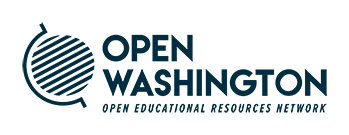Lessons Learned – Open Policy Video
Open at Scale: Lessons Learned in the TAACCCT Program
“The fundamental idea behind the reform was to make sure that when the public invested in creating learning materials, that the public would get free access to those learning materials and also would be able to improve them over time.”
Participants:
- Hal Plotkin, Senior Open Policy Fellow at Creative Commons, Former Senior Policy Advisor to Under Secretary of Education in the US Department of Education.
- Paul Stacey, Associate Director of Global Learning at Creative Commons.
Summary:
This segment spotlights the Trade Adjustment Assistance Community College and Career Training (TAACCCT) Grant Program as a prime case of OER policy implementation on a national scale. Plotkin first provides the contextual background of the initiation of the program. Then he raises issues regarding public access to publicly funded materials and the extra cost needed to create the same materials. In response, Stacey shares his experience overseeing TAACCCT program and how the participating faculty are leveraging the existing resources to create opportunities for innovation. He further discusses that the OER developed through this process connects employers and educators by providing curricula that matches employer needs. Stacey also introduces the Skills Commons, a public repository for all TAACCCT produced materials. Stacey and Plotkin move on to discuss the open licensing requirement of the grant, which mandates that all of the intellectual property created by the grants had to be released under Creative Commons Attribution license. Finally, Stacey introduces Stacked Credentials as a way for OER to help accelerate the development of high growth areas of industries. They conclude the conversation by discussing the impact of open access on increasing transparency at every step of education and career opportunities.
Guiding inquires:
- What is the role of open policies with regards to renewable public investments vs. consumable public investments?
- How does an open licensing requirement affect overall implementation of a project?
- An open licensing requirement for large-scale grants is now more widespread than before. What is the intention and motivation behind these requirements?
Suggested activities:
- One simple open licensing policy requirement by the US DOE made the works of 700 TAACCCT grantee colleges freely accessible to the public. Consider what other areas could benefit similar public policy changes and share your thoughts with colleagues.
- Imagine yourself as a director of Open Education at your institution. What policy changes do you think would help promote OER use? For example, some adjunct faculty members wish that their department would explicitly endorse the use of OER. If college/department has a policy that allows adjuncts to use OER upon approval by the department, it will help adjuncts adopt more OER and create a welcoming climate for generalized OER practices.
- Policy is a simple statement. However, policy implementation is another significant challenge. Hypothesize that your institution has a similar open licensing policy as the TAACCCT Grant. What are the key principles of planning for policy implementation?
